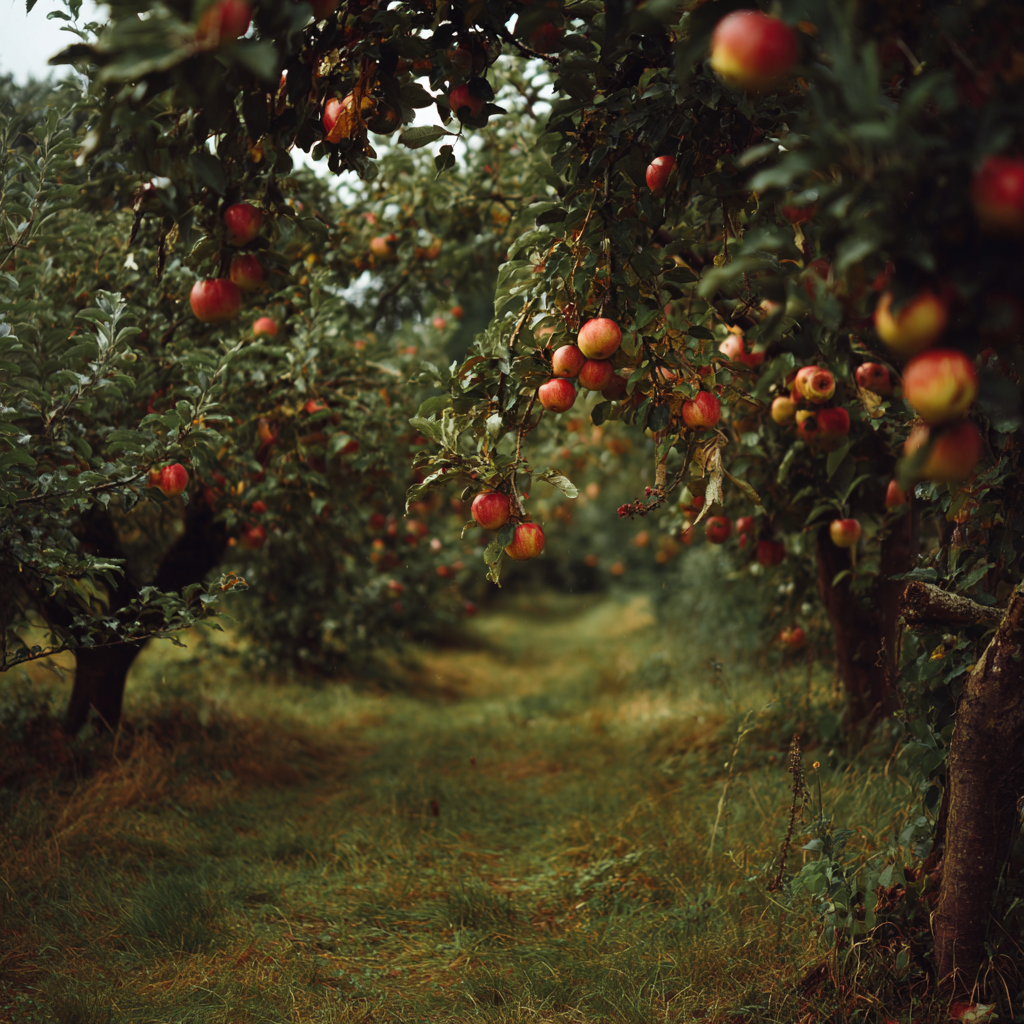Cambridgeshire is steeped in a rich horticultural history, whether it’s the Botanic Gardens in central Cambridge, the Cathedral in Ely, or the acres of heritage gardens across the county, you’ll find reminders of a time when orchards were everywhere. It’s a story that stretches from medieval abbey gardens through to sprawling orchards of the Victorian era, and down to the precious heritage varieties that are still around today.
Orchards Since Medieval Times
Orchards in Cambridgeshire date back at least to the 12th century, when abbeys like Ely and Thorney had gardens “filled with apple‑bearing trees,” sometimes referred to as paradises. These early plantings laid a foundation that stretched over centuries, helping turn the region into a horticultural stronghold.
The real surge in commercial fruit growing began in the mid-1800s. Orchards sprang up around Wisbech and spread across the county, driven by railway access and agricultural hardship. Villages like Melbourn and Meldreth became orchard hubs, with dozens of growers supplying fresh fruit far beyond the Cam Valley.
One local story is the Chivers family of Histon. They began orchard enterprises in the 1850s and by 1873 had launched a jam factory. Chivers and Sons bred apple varieties like Histon Favourite and Chivers Delight, and supported everything from labelling to basket-making all on-site. At their height, Chivers employed thousands and was mostly a self-reliant business.
Local Varieties That Tell a Story
Cambridgeshire hasn’t just given us apple and plum varieties that carry more than flavour, they also carry a rich history that has ties within the local community:
- Histon Favourite: Raised by John Chivers in Histon mid-1800s. A small pale yellow apple blushed with pink stripes. Crisp and sharp when picked, mellowing in storage. Widely grown across the county.
- Jolly Miller: From Cottenham, circa 1883. Medium‑sized with yellow skin and broken red stripes. Said to take its name from a village pub where fruit was traded, and resembling a ripe tomato when mature.
- Cambridge Gage: A greengage variety that dates to 1927. Known for heavy cropping, self-fertility, and resistance to disease; even picked up an RHS Award of Merit.
- Willingham Gage: Believed to have originated in Willingham in the 1800s. Self-fertile, easy to grow, and praised for superb quality and sweetness.
And let’s not forget the crab apple; small, tart but rich in pectin, perfect for jellies and still found in hedgerows and older orchards.
Orchards: A Shrinking Landscape
Sadly, the orchards that once defined our landscape have largely vanished. In Cambridgeshire, today’s orchard area is just around 20% of what it was in 1950, with many being lost to housing, neglect, or arable conversion. That’s a blow not only to local produce but also to wildlife as traditional orchards are biodiversity hotspots.
Projects like Trumpington Community Orchard, part of the East of England Apples and Orchards Project, aim to revive interest in heritage varieties and preserve the ecological value of orchards.
Why It Still Matters
Beyond being visual eye-candy, orchards were once valuable economic and cultural assets. In the 19th century, the income that came from apples could match beef or wool in value for smallholders. Orchards often paid part of local tithes and sponsored community events like wassailing, which were rituals to ensure a good yield.
Today, heritage varieties bring unique flavours you won’t find in supermarkets, with the one-bite Red Crockett or the floral Barnack Beauty being far better tasting, even if they’re harder to grow or spot. There’s also a real urgency behind preserving them. A UK genetics project led by Bristol University and Sandford Orchards is sequencing ancient apple trees, “survivor” varieties, to safeguard traits valuable for pest resistance and climate resilience.
Looking Ahead
Cambridgeshire’s orchard story is one of resilience and reinvention. From medieval abbey precursors to the jam-making heyday of the Chivers, all the way to modern community orchards and conservation efforts; it’s a story woven into our landscape.
Whenever you bite into a Cambridge Gage or come across a Jolly Miller, you’re tasting history. Let’s hope we keep finding ways to keep that heritage alive and delicious for decades to come!
References
- Jonathan Spain’s Blog+4crumbsonthetable.co.uk+4Trumpington Community
- Orchard+4midsummercommon.org.ukapplesandorchards.org.uk
- Jonathan Spain’s Blog+4midsummercommon.org.uk+4crumbsonthetable.co.uk+4
- Jonathan Spain’s Blog+2Wikipedia+2
- Trumpington Community Orchard
- nbis.org.uk
- Trumpington Community Orchardapplesandorchards.org.uk
- The Guardian
